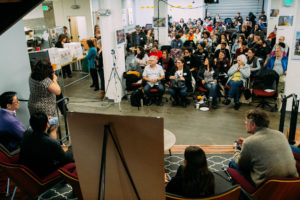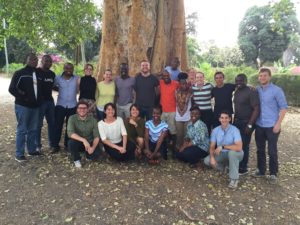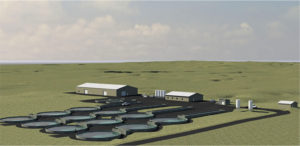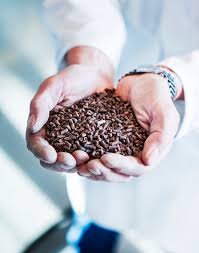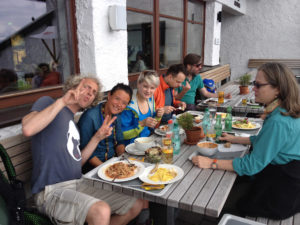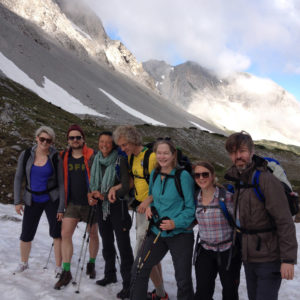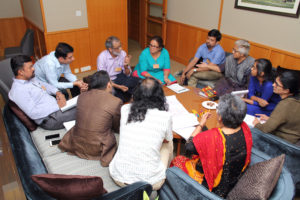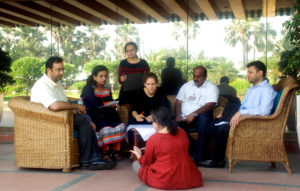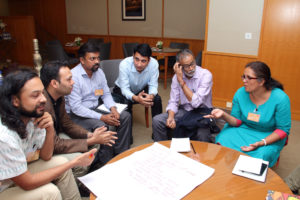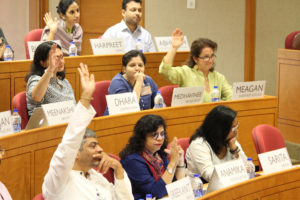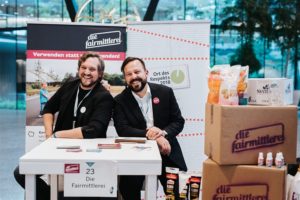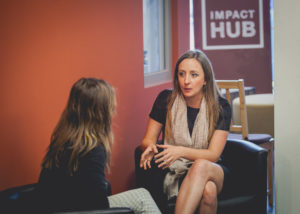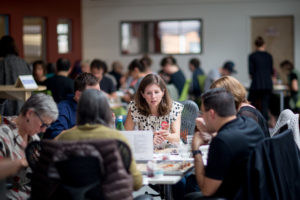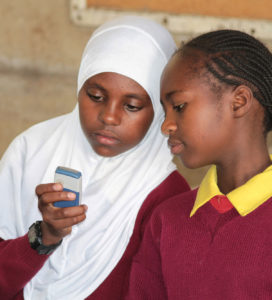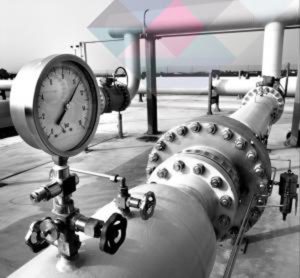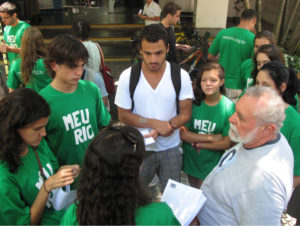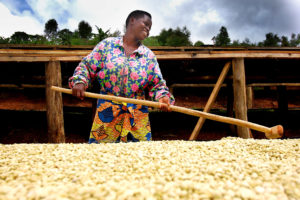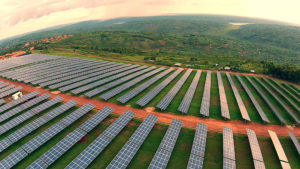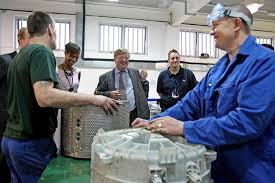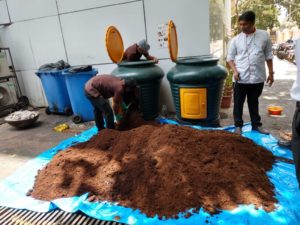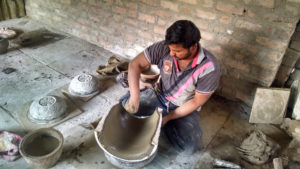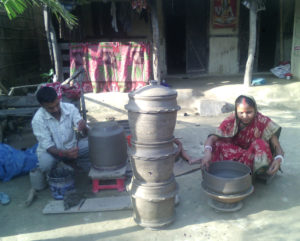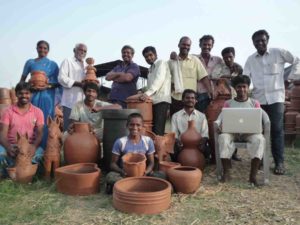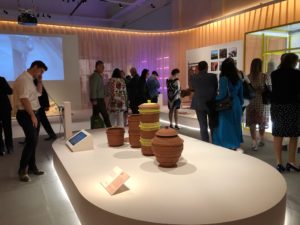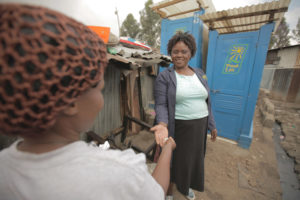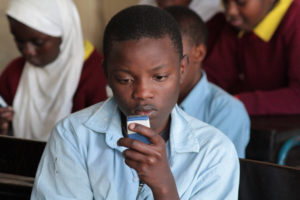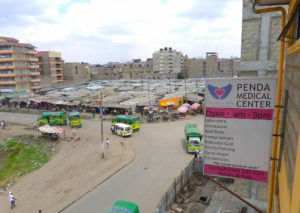Lisa and I co-founded KL Felicitas Foundation (KLF), our family foundation, in 2000 focusing on two main themes:
- Empowering social entrepreneurs worldwide to increase their impact; and
- Changing the financial system to include impact at its core.
About 12 years ago, we identified two leverage points to help change the financial system:
- Create a 100% impact portfolio with a 10-year track record of market rate returns and inspire others to do the same; and
- Help create the deep impact movement.
KLF has been at the forefront of the 100% impact movement, having committed 100% of its assets to positive impact over 12 years ago. In 2015, Sonen Capital published KLF’s 9-year financial track record and in 2018, New Philanthropy Capital together with Sonen Capital published a comprehensive impact report, which also includes a summary of KLF’s 10+ year financial performance. This report proves, that a 100% impact portfolio can realize market rate financial returns, while accomplishing deep impact with roughly half of its investments and broad impact with the rest of its investments. Deep impact investments are characterized as ‘contributing to solutions’ in the Investment Management Project terminology.
KLF has inspired others to pivot their portfolios towards 100% impact, particularly broad impact portfolios, which are usually constrained by market rate returns. We strongly believe, that deep impact portfolios should not be measured against market rate returns, but against ‘appropriate’ financial returns. It will take some time, though, to develop the new theories and benchmarks necessary to define what ‘appropriate’ means in the context of financial and impact risk.
On this page we show that KLF is making contributions to systemic change on multiple levels: helping to build the impact ecosystem, helping to build impact management methodologies and practices, helping to democratize impact investing, and helping to develop new financing approaches & products.
Building the Impact Ecosystem
The impact investing ecosystem is a subset of the financial markets and consists of three major segments: supply, demand and intermediaries:
- On the supply side of deep impact, high net worth individuals and family offices are most active since they have the necessary flexibility and autonomy. Other types of investors are foundations, philanthropists, charities, investment banks, and commercial banks. Institutional investors are showing increased interest in impact investing and are entering the broad impact market now.
- The demand side of deep impact is currently shaped by social enterprises, charities, social venture funds, and for-profit organizations with a mission.
- Intermediaries connect supply and demand; they include networks, financial advisors, investment banks, exchanges & platforms, and rating & certification organizations.
Our Engagement in Building the Impact Ecosystem
In the early days of a market, innovators usually engage in many if not all of the different segments of the ecosystem in order to help build it. This has been our approach.
Supply Side
On the supply side, Lisa and I and others co-founded Toniic. Toniic is the global action community for impact investors. Toniic’s vision is a global financial ecosystem creating positive social and environmental impact. Its mission is to empower impact investors. Toniic’s members commit to discover, evaluate, nurture and invest in financial products that promote a just and sustainable economy.
A subnetwork of Toniic is the 100% Network, whose members (the 100%ers) have intentionally committed to fully deploy at least one of their portfolios with positive impact – across all asset classes. 100%ers are motivated by different intentions and impact themes. They see their portfolios as an expression of who they really are, as the change they want to see, not as an intellectual exercise of maximizing their profits. They are motivated by the joy of making a positive contribution, not by the fear of losing their wealth.
We have been deeply engaged in one of Toniic’s major projects: The T100 project, which is a multi-year study of the portfolios of over one hundred 100%ers. It reveals new insights about the various paths towards and feasibility of 100% impact investing. The T100 Project includes periodic reports, issue briefs, videos, podcasts, and the Toniic Diirectory, a peer-sourced directory of over 1,000 impact investments across all asset classes.
Demand Side
On the demand side, Lisa and I co-founded Social-Impact International which starts and supports regional accelerators for social entrepreneurs. Through Social-Impact International, we co-founded three accelerators:
- In the early 2000s, we co-founded Dasra Social-Impact in India.
- In 2010, we co-founded the Central European Investment Ready Program in Vienna / Austria – focused on integrating social entrepreneurs from Eastern Europe into the global supply and value chains.
- In 2014, we co-founded the Hawaii Investment Ready Program in Honolulu. There we focus on combining Hawaiian wisdom with modern business tools. We help entrepreneurs develop innovative and sustainable ways for solving social and environmental challenges in an island economy, which provides unique opportunities by virtue of its remote location and resource scarcity.
Intermediary Side
On the intermediary side, we are investors in Sonen Capital (a pure-play impact investment management firm) and ImpactAssets (the impact platform for donor advised funds). We have collaborated and co-invested with Total Impact Capital (a new breed of impact merchant bank). We have helped the ImpactHub movement grow. And we regularly invest in first time fund managers (like Zouk Ventures I, Beartooth Capital I, Aqua-Spark, Better Ventures, Global Partnerships, Eko Asset Management Partners, MicroVest I), new financial instruments like Social-Impact Bonds and new impact platforms like Social Stock Exchanges.
Impact Management Practices
The development of impact management practices and methodologies have been up front and center in the impact space for some time now, and rightly so. Almost all practitioners agree that impact management is not only necessary but essential to apply throughout the full life-cycle of an investment.
Impact management starts with the intentionality of both the investor and the investee, which need to match in order to avoid a significant and painful mismatch or re-alignment of expectations downstream. Impact management continues through all phases of an investment, from pre-due diligence, due diligence, deal structuring and deal monitoring all the way to exits.
Over the last few years many tools, methodologies and best practices have been developed by a number of actors, including Theory of Transformation; Theory of Change; metrics like IRIS+; Sustainable Development Goals; and impact validation schemes like Acumen’s lean data or modern technology platforms utilizing blockchain and artificial intelligence to monitor, report and analyze impact, like Proof of Impact. The Toniic Institute developed its SDG Impact Theme Framework and Impact Portfolio Tool as a public good. The Impact Management Project has been building consensus on how to measure and manage impact by engaging over 2000 practitioners in co-developing its norms, tools, and methodologies.
Our engagement in Building the Impact Management Practices
KLF has been at the fore-front of impact management since its inception. KLF’s latest report, ‘In pursuit of deep impact and market-rate returns’ was published together with New Philanthropy Capital and Sonen Capital in 2018. In this report, we document KLF’s Theory of Change as well as KLF’s impact using various tools like IRIS, Sustainable Development Goals, NPC’s Impact Risk Classification Tool, Impact Management Project’s portfolio classification scheme, and surveys of many of KLF’s investees to validate non-financial contribution. And we include the 10+ years financial results.
Note that KLF was able to deliver market rate returns over 10+ years, while moving almost half of its portfolio (46.8%) into investments that contribute to solutions.
New Philanthropy Capital developed an innovative Impact Risk Classification scheme which assesses how robust an organization’s evidence of impact is, and how much thought and focus the organization has given to how it expects to generate impact. Good impact practice is rated on five measures: Principles, purpose, outputs, outcomes and impact. The report explains in detail how to use this classification scheme as well as the results of its application to KLF’s portfolio.
Measuring systemic change is complex, not just a simple exercise of measuring discrete quarter-over-quarter financial results. It would therefore be naïve to assume that we can quickly and easily develop the ultimate impact management methodology and toolset. While measuring impact of some themes like renewable energy and delivering drinking water for the poor are well understood and fairly simple, measuring progress on social justice, in-equality and poverty alleviation will take longer. I anticipate that we will have to go though some level of complexity before we will be able to develop simpler and more intuitive tools and methodologies.
The Club of Rome recently published a Climate Emergency Plan, articulating its vision for a positive future where global inequalities are dramatically reduced, well-being rather than growth is the economic norm, and harmony is reached between humans and nature – creating thriving civilizations in balance with planetary boundaries. I could not agree more.
The Stockholm Resilience Centre recently published a report called ‘Transformation is Feasible’, where they compellingly make the case that Agenda 2030 (SDGs) and conventional growth are incompatible. They make a convincing argument that success in reaching the eleven social and economic goals (goals 1-11) – if done based on conventional growth policies – would make it virtually impossible to reduce the speed of global warming, to stop overfishing the oceans or to stop land degradation, let alone to halt biodiversity loss.
Most well-meaning efforts dealing with SDGs get stuck in treating the symptoms, get stuck in doing a simple mapping, get stuck in trying to address individual SDGs as opposed to taking a systemic view. And virtually nobody makes the case that even taking a systemic view will not be enough, unless increased consciousness and awareness is ushering in a behavioral transformation that results in accepting responsibility for the status quo, and how to fix it – particularly in the rich parts of our planet.
Democratization of Impact Investing
Today impact investing is mostly the domain of wealthy individuals, foundations, and endowments. Non-accredited investors and/or retail investors are not yet able to meaningfully participate in this new way of investing. This is because of a lack of products, a lack of access to products available to more affluent investors, a lack of impact advisors serving that segment of the market, and a lack of transaction platforms.
Many innovative ideas are being implemented right now to connect retail investors and non-accredited impact investors to investments. Examples are social stock exchanges, movement building platforms, and products specifically targeted towards the retail investor segment.
Social Stock Exchanges
Social stock exchanges provide access to businesses and investors seeking to achieve a positive social and environmental impact. Their mission is to stimulate a vibrant public social investment market, enabling all impact businesses to have greater access to capital so that investors – both retail and institutional – can identify, transact and realize their social, environmental and financial goals.
KLF invested in the first social stock exchange in the UK.
Movement building platforms
Movement building platforms help create new movements or support existing movements, brands and organizations to address complex global challenges, tackling issues where mass participation and collective action can unlock big change. Examples of such change are the shifting perceptions on marriage equality, addressing America’s gun violence epidemic, changing the food industry, building the sharing economy, or inspiring action around climate change.
KLF invested in Purpose, one of the early movement building platforms.
Retail Products
The RSF Social Investment Fund (SIF) pools investments to finance non-profit organizations and social enterprises. The SIF Note is a three-month investment product that provides retail investors with an opportunity to put their dollars into a diversified, direct loan fund doing impact work. Investors earn monthly compound interest that is paid upon maturity. RSF focuses its efforts in the areas of food and agriculture, education, the arts and ecological stewardship.
ImpactAssets Global Sustainable Agriculture Note was a publicly available debt security that invests in grower cooperatives and agricultural enterprises promoting sustainable agriculture practices that improve environmental performance while benefiting small to mid-sized farmers.
KLF invested in both, the ImpactAssets Global Sustainable Agriculture Note and the RSF Social Finance Investment Note.
New Financing Approaches
The desire for sustainable long-term impact with the appropriate financial return is driving much needed innovation in new investment vehicles like social impact bonds, new impact term sheets like demand dividend structures and innovative approaches to blend different types of capital like grants, commercial and subsidized capital and loan guarantees.
Social Impact Bonds
A social impact bond, also known as ‘Pay for Success Financing’, is the first financial instrument, that explicitly ties the financial return to the social impact achieved, as validated by a trusted third party. It is a contract with the public sector, whereby it pays for better social outcomes in certain areas and passes on part of the savings achieved to investors. A social impact bond is not a bond, per se, since repayment and return on investment are contingent upon the achievement of desired social outcomes; if the objectives are not achieved, investors receive neither a return nor repayment of principal.
KLF invested in the first social impact bond, which was launched in 2011 in the UK by the Peterborough Prison. The bond raised 5 million pounds from 17 impact investors to fund a pilot project with the objective of reducing re-offending rates of short-term prisoners. In July 2017, an independent evaluation determined that the Peterborough Social Impact Bond reduced reoffending of short-sentenced offenders by 9%. As a result, the investors received a financial return of just over 3% per annum for the period of the investment.
As of July 2019, 132 social impact bonds have been launched in 25 countries, raising more than $420M to address social challenges such as public safety and recidivism, rough sleeping and chronic homelessness, health care services for older people, services for communities in need, foster care services, and family support services.
First Social Impact Bond in the UK by the Peterborough Prison
Impact Term Sheets
The venture capital community has standardized on term sheets which are optimized for maximizing one-time financial exits – with no discernible or intentional concern for social and/or environmental impact. The impact investing community strives for the opposite: long term sustainable positive social and/or environmental impact – with an appropriate financial return. It is, therefore, not surprising, that many times pure equity term sheets don’t fit the objectives of the impact investing community.
One innovation in the impact space is called ‘Demand Dividend’, which is a variation on a debt royalty structure, modified to fit the realities of investing in frontier economy social enterprises. Demand Dividend is designed to enable investors to generate a reliable, reasonable return while allowing social entrepreneurs to maintain control and efficiently deploy capital. Demand Dividend has four central features: payments are tied to cash flow; a ‘honeymoon period’ to allow capital to go to work, a fixed payoff amount (multiple of initial investment) and term sheet covenants focused on aligning incentives. These elements balance the needs of investors and social entrepreneurs.
KLF has deployed a Demand Dividend like structure with PBK Waste Management, one of its investments in India. The investment in ImpactAssets was structured as a Revenue Royalty, a financial structure similar to a Demand Dividend, also designed to enable successful capital exits.
Blended Capital
Some impact investors deploy different types of capital with different financial risk/return and impact risk/return expectations, e.g., grants, subsidized capital and commercial capital. This type of investing is called blended capital investing. The objective of blended capital is to have deeper and/or broader impact than a single type of capital would have on its own.
US Foundations are able to deploy blended capital from a single entity, which makes them prime candidates for blended investment strategies. Foundations engage in pure philanthropy through grants, in subsidized investments through so-called Program Related Investments, and in impact investments out of their corpus.
Deploying different types of capital over time is needed for social enterprises which (a) will never create enough value to attract pure equity capital or (b) don’t have a robust enough cash flow and/or don’t have collateral to attract commercial debt. In this case starting with a grant, followed by a loan guarantee to help them access commercial debt could make a lot of sense. We believe reaching impact at scale depends on a sustainable business model, which usually depends on access to commercial capital. Therefore, we help guide social entrepreneurs that we support to move from grants and/or subsidized capital towards more commercial capital over time.
KLF is a blended capital investor. KLF invests in accelerators for social entrepreneurs using its philanthropic capital. KLF then uses blended capital to support some of the graduates of these accelerators. A couple of examples are PBK Waste Management, a graduate of the Dasra Social Impact program in India; and MA’O Organic Farms, a graduate of the Hawaii Investment Ready program in Honolulu.
KLF also supports smaller and first-time social venture funds that need blended capital for themselves or for supporting capacity building for their investees. Examples are investments in Global Partnerships, Grassroots Business Fund and Acumen Capital Markets I. An example of where KLF provides a loan guarantee to unlock much more capital is Microcredit Enterprises.


